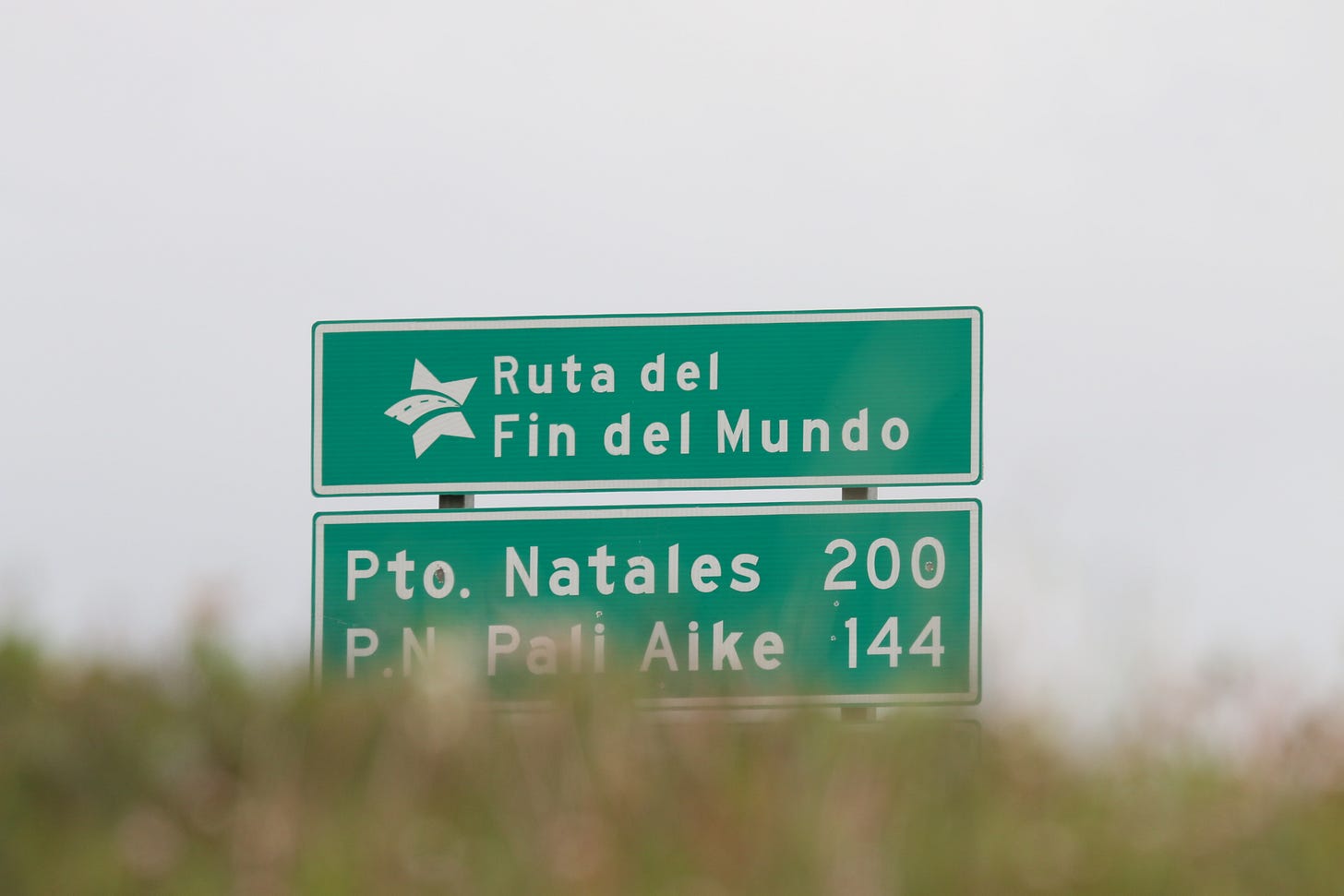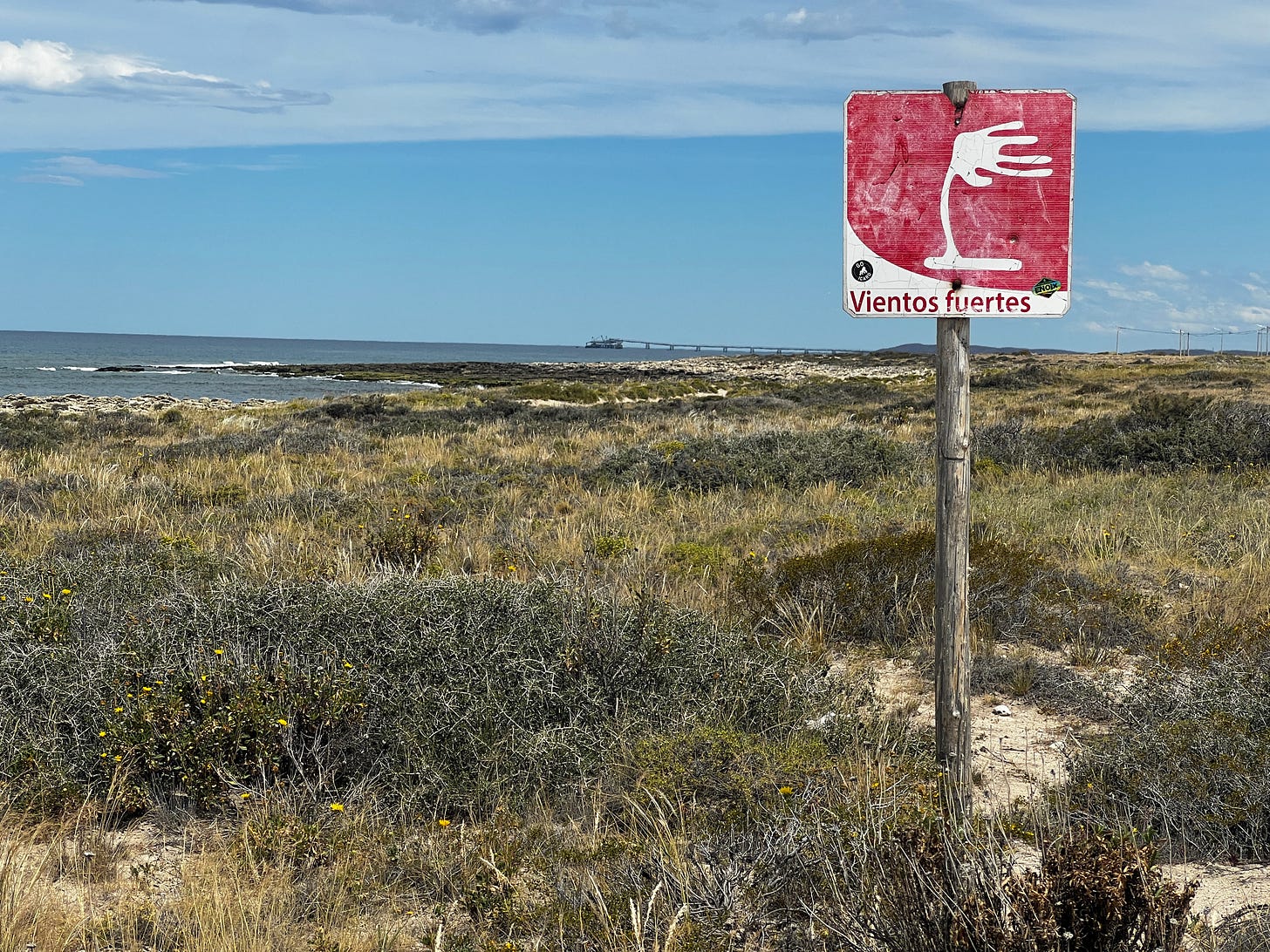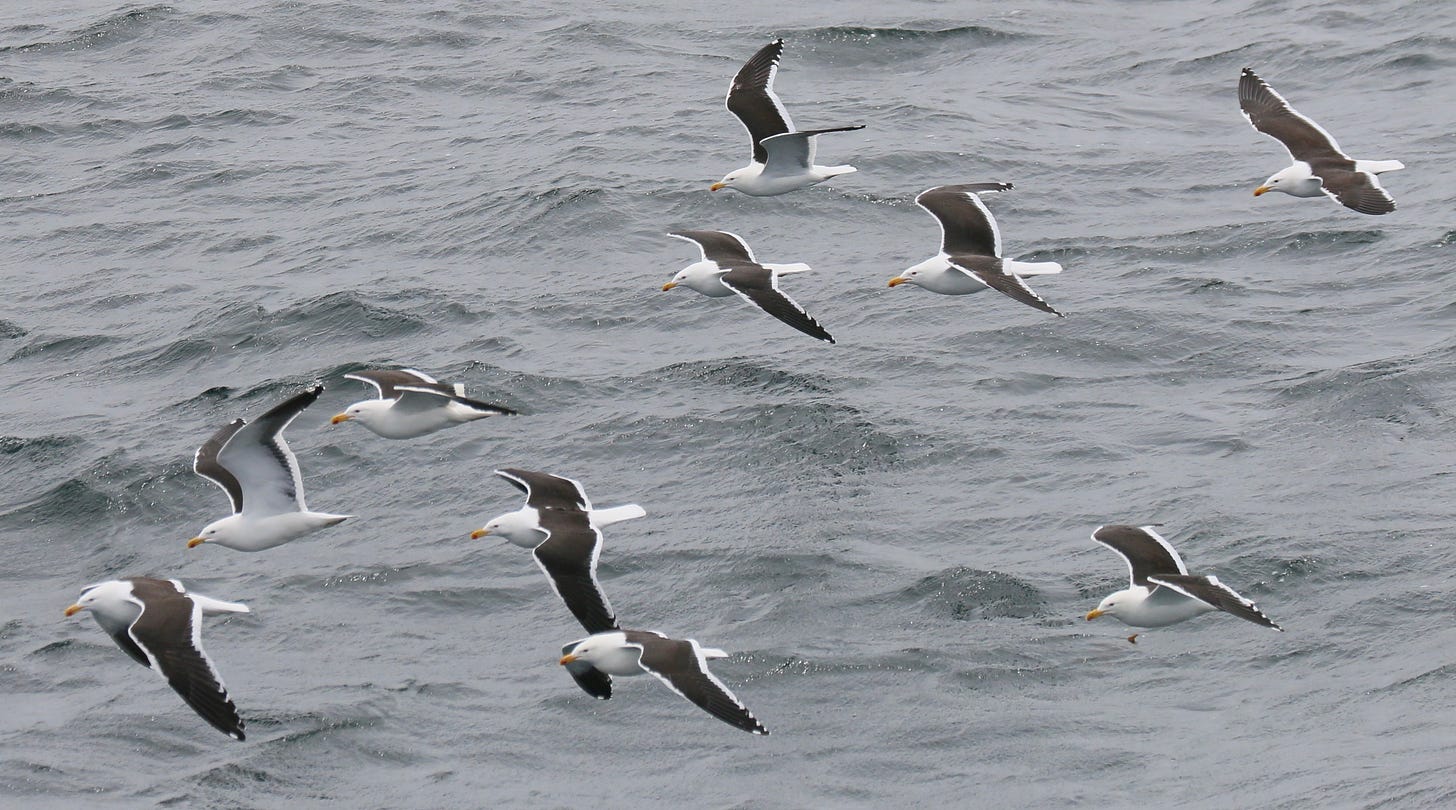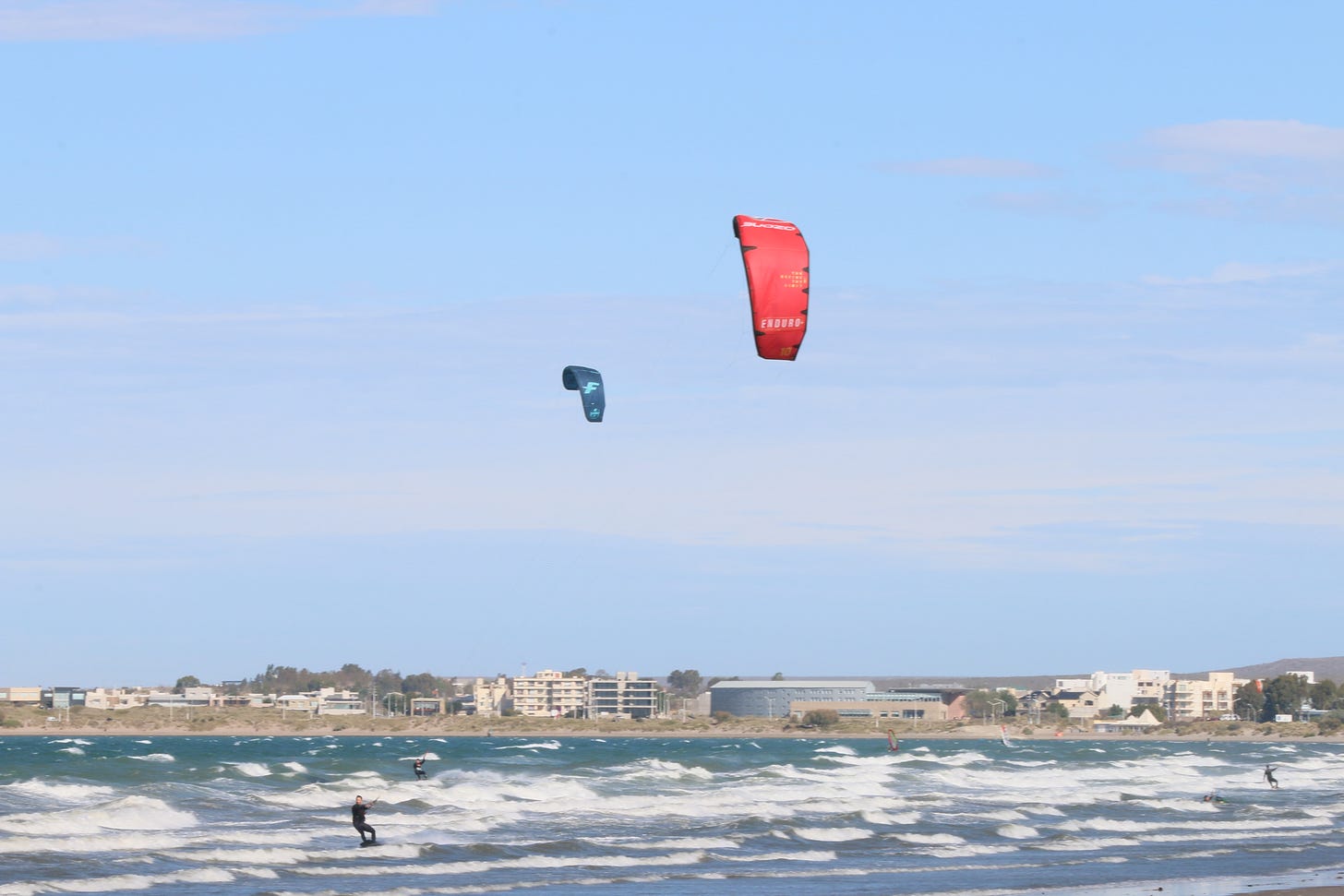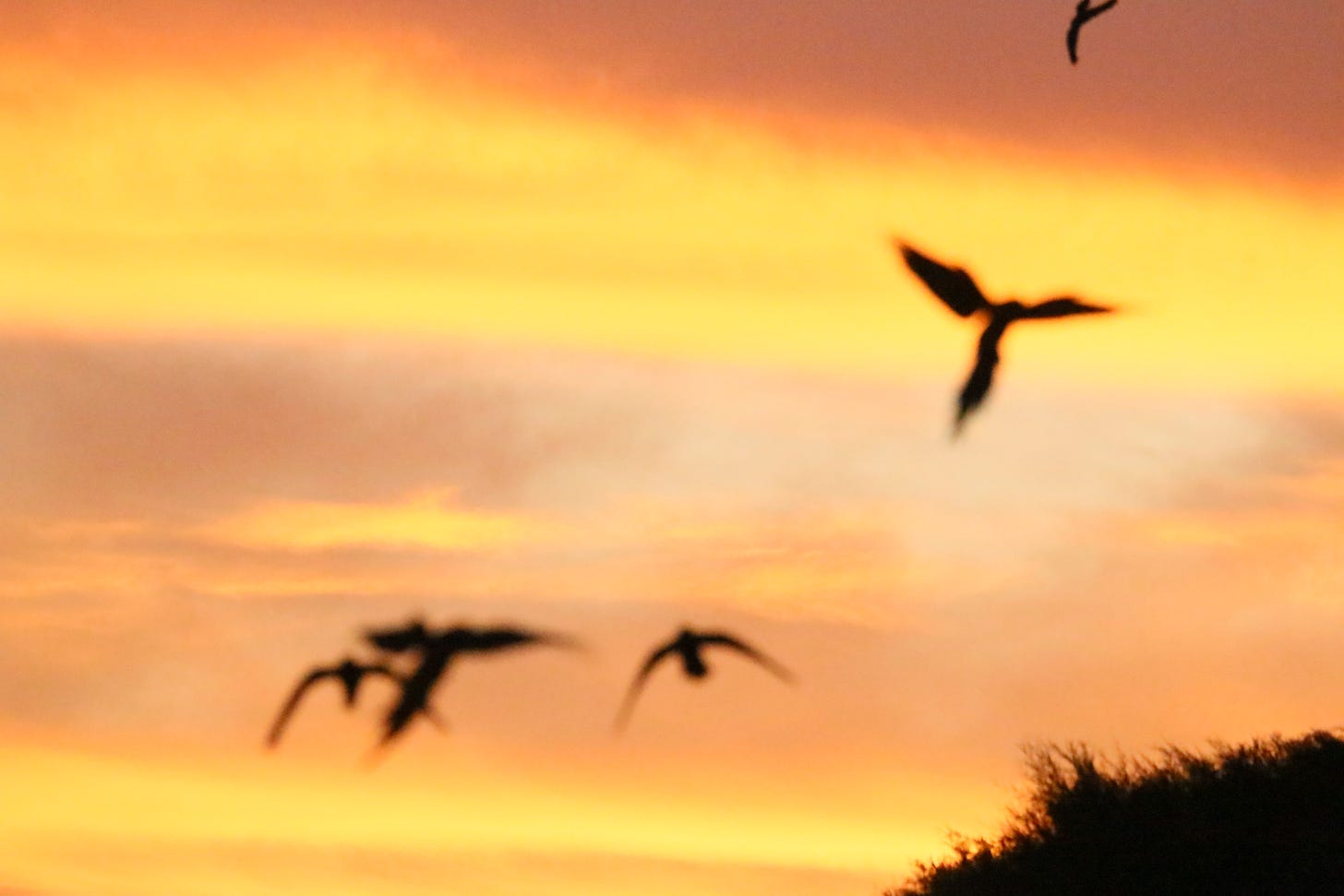Winds of Transition
Paths to the other side, a Patagonian adventure.
Vientos Fuertes, the sign warned, strong winds.
No kidding. We were leaning into them to keep our balance here in Patagonia, Argentina, as we looked out at the Atlantic Ocean.
My guide to these parts, Argentine journalist Silvina Frydlewsky, and I had stopped along the coast while driving between two of the remarkable wind farms here in Patagonia. They’re known much more poetically in Spanish as parques eólicos. These collections of giant wind turbines sport blades approaching the length of football fields. They’re some of the most productive and cheapest energy sources in the world, but also among the most challenging.
I’ll tell you about those. But first a digression about another adventurer who harnessed these very winds more than half a millennium ago: Ferdinand Magellan. He passed by here in 1520 on his way to secure nutmeg, clove and other exotic condiments in the Spice Islands, another very big ocean away from where we stood.
On the way, his voyage change the world.
Departing from Spain in search of a western route to the islands, his expedition wound up circling the earth, the first ever global circumnavigation. Of the five ships that set out, only one returned to Spain, whose King had paid for the trip. Magellan didn’t survive the journey, but he did find a passageway to the Pacific Ocean.
That route became known as the Strait of Magellan
Perhaps this made the whole venture worth it to him — finding a seafaring route around the Americas was no small thing, especially one that didn’t require rounding the trecherous Southern Ocean waters off Tierra del Fuego. Or perhaps not; Less than six months later, after a Pacific crossing that was another first for a European, he was hacked to death by an indigenous tribe he chose to attack in the Philippines.
It strikes me the whole enterprise was a little like…you guessed it… the energy transition.
Starting off, Magellan underestimated the magnitude of the undertaking.
Ships had already reached the Spice Islands from the other direction. He figured the earth was spherical — the ancients had pretty much established that — even if nobody had actually circled it to prove the point.
He may have figured, how tough could this be? Ok. No fool, he probably knew it would be tough. But, really, how much tougher than your average scurvy- and rickets-plagued sailing adventure through unexplored, sea monster infested waters?
A lot, it turned out.
(I’m getting all this history, by the way, from a terrific 2003 book about the expedition by Laurence Bergeen: Over the Edge of the World: Magellan’s Terrifying Circumnavigation of the Globe.)
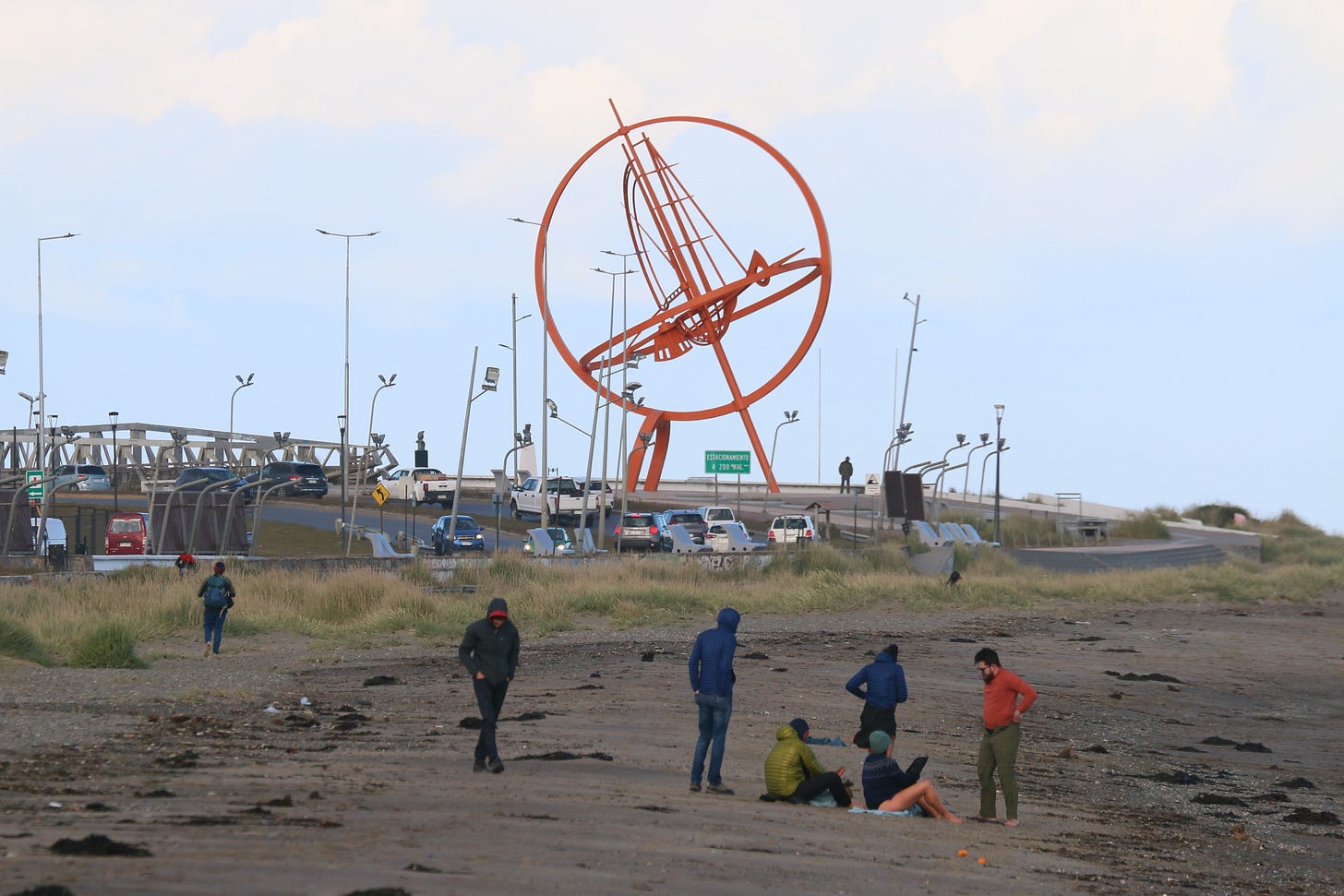
The biggest problem for the expedition wasn’t the natural elements — the physical constraints in the energy transition analogy. Clever adventurers had concocted some decent navigation techniques using the stars.
It wasn’t the vast unexplored expanses — the pure scope of the challenge. The Europeans, in particular, had built some pretty hearty sailing vessels, even if they still managed to often wreck them.
(In this video below, check out the force of the winds on an average day in Puerto Madryn, where we stopped for two days.)
No, turns out their biggest problem was themselves.
An officer sexually assaulted an apprentice seaman, for which he was tried and executed by strangulation. The episode spread bad will. A captain accused Magellan, who was Portuguese, of being a double-agent against Spain and plotted to kill him. Magellan captured the mutineers and punished them with beheading, drawing and quartering and hanging them by their feet as an example to others.
The captain who made the initial accusation was left to starve on a deserted island. That spurred a shipful of stewing dissenters to return to Spain even before the arduous search for a passage around South America had begun. Another ship sunk during the long search for a way through.
In other words: lot of mistakes and far too much passionate, all-too-human infighting.
Then there were the technical challenges. The charts they brought along to cross the Pacific, an unmapped area way larger than they anticipated, proved wildly inaccurate. Magellan tossed them overboard. He began navigating in a more intuitive way, taking advantage of the new technology his ships were equipped with to be agile and maneuverable and speed across the Pacific expanse.
Then, just when they thought they’d gotten through the worst of it, Magellan — full of missionary zeal — took on a side project of converting local islanders to Spanish Catholicism when passing through the Philippines. One tribe declined. Magellan wouldn’t take no for an answer. Ordering an attack, he sorely misjudged the upper hand heavy modern weapons provided. His landing crafts hit a reef. He and his fighters had to wade through waist-deep water.
Here he met his end at the hands of the put-upon locals.
Enough men were left to sail two of the ships on to the Spice Islands. But one of those ships was in such bad shape it was left behind and later sunk in a storm.
A single ship made it back to Spain three years later, carrying 18 bedraggled and diseased sailers out of the crew of 280 that started the trip.
So, a much tougher than expected journey.
Still, as Bergeen puts it:
”This circumnavigation forever altered the Western world’s ideas about cosmology — the study of the universe and our place in it — as well as geography. It demonstrated, among other things, that the earth was round, that the Americas were not part of India but were actually a separate continent, and that oceans covered most of the earth’s surface. The voyage conclusively demonstrated that the earth is, after all, one earth. But it also demonstrated that it was a world of unceasing conflict, both natural and human.”
So good and bad news. Let’s hope we can improve on this when it comes to the energy transition, even as we pursue more or less the same goal, changing the world.
Wind power — those vientos fuertes where we started — has its place in this effort, despite being much maligned these days in what seems like the unceasing conflict of the stage of the energy transition we’re currently in the throes of.
And modern wind power is what I will fill you in on in my next post….



